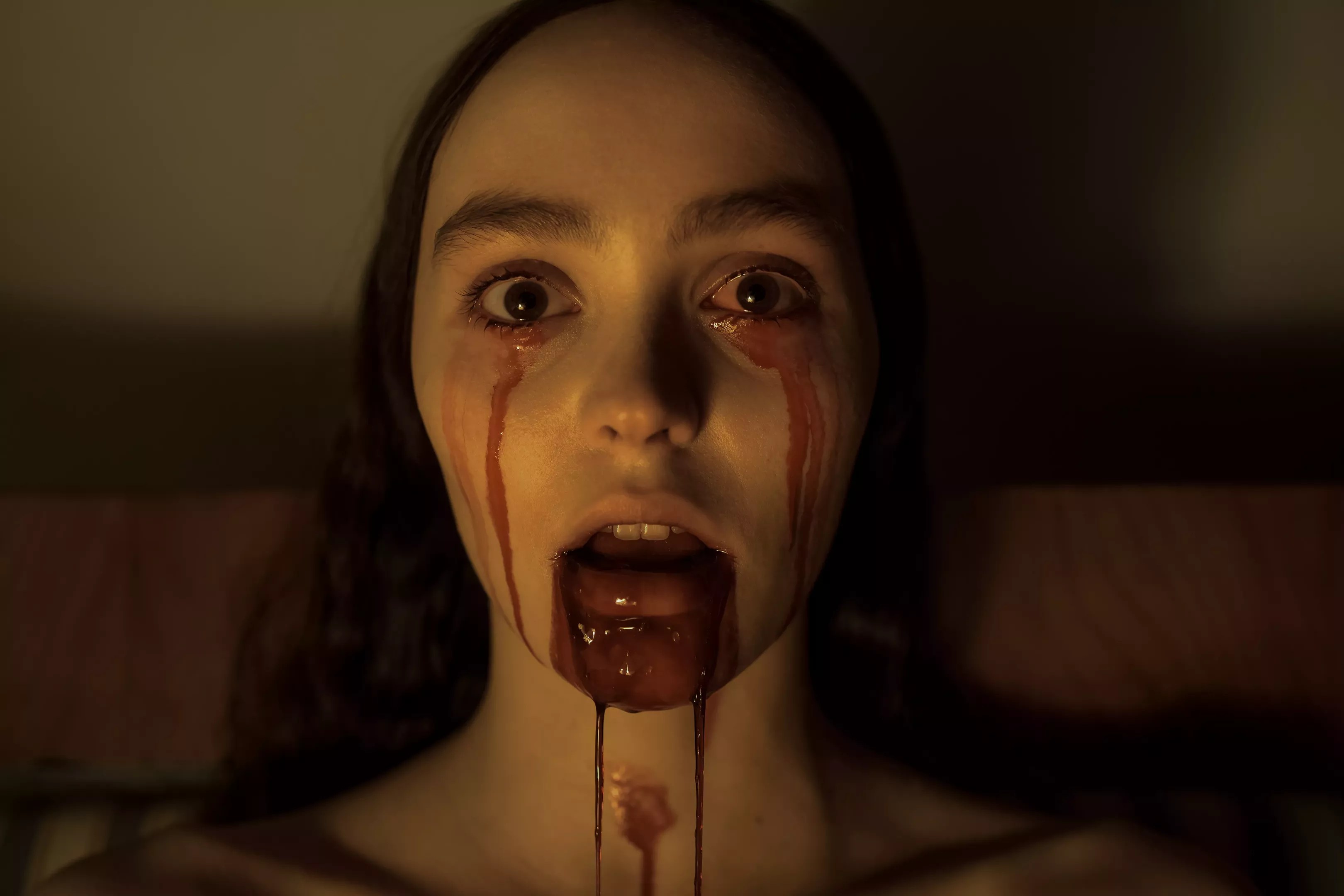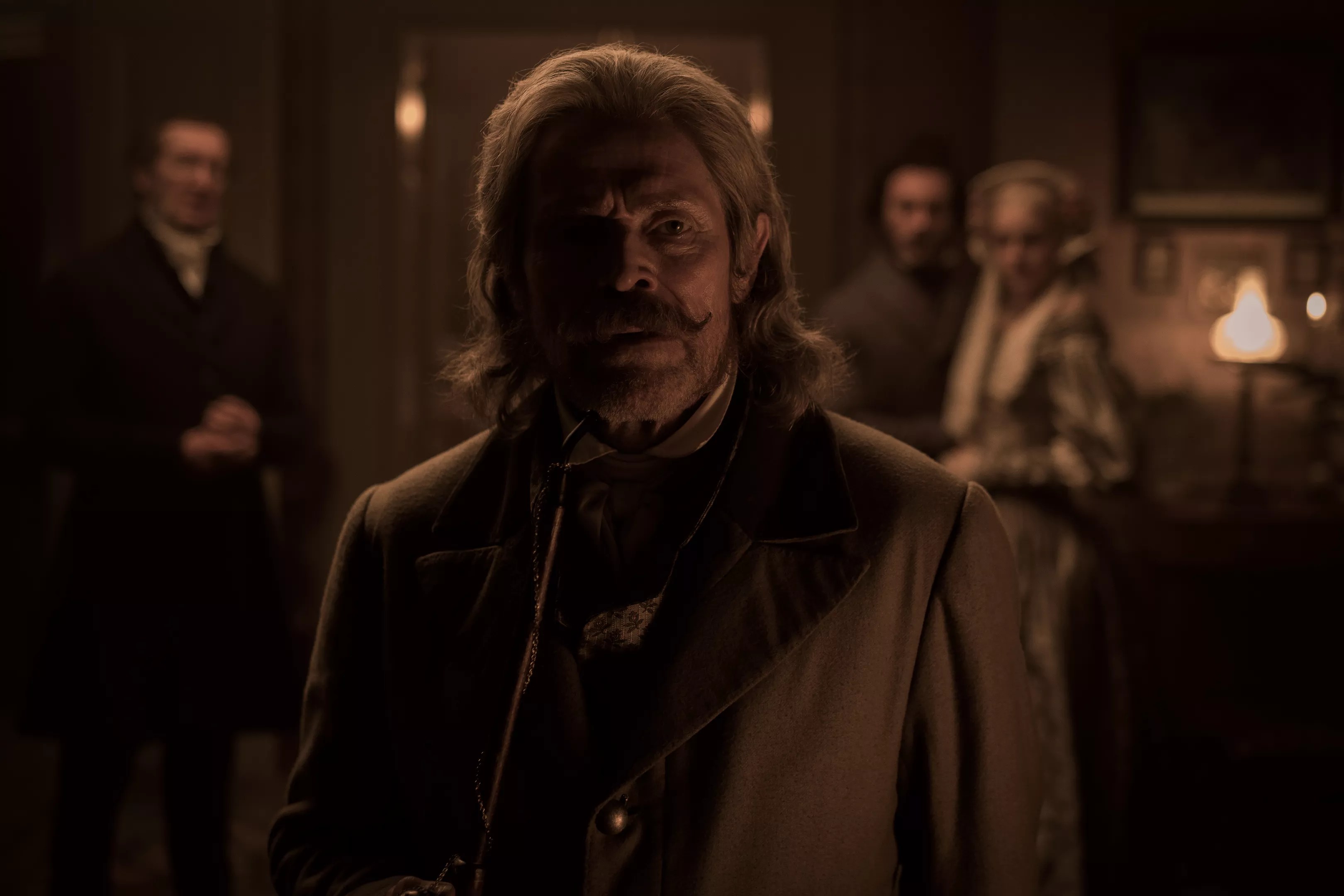
Focus Features photo

Audio By Carbonatix
Earlier this year, I declared that Longlegs was the scariest movie of the year. I should have written “so far” because Nosferatu chewed it up and swallowed it. Crafting a doom-laden epic of horror cinema out of F.W. Murnau’s influential silent-era classic, Robert Eggers’ masterful adaptation is unbearably intense, terrifying, and perverse.
Watching this film is like going to a Nine Inch Nails concert. You havin’ a good time? Ready to party and have fun? Wrong fuckin’ movie. We’re here to have a bad time.
The plot of this Nosferatu is broadly the same as previous versions of the film, and the original itself was a Germanized ripoff of Bram Stoker’s novel Dracula. In 1838, mild-mannered real estate agent Thomas Hutter (Nicolas Hoult) travels from his home in the German city of Wismar to far-off Transylvania to close a deal with the mysterious Count Orlok (Bill SkarsgÁ¥rd). He soon discovers the count is a vampire, a bloodthirsty, deathless fiend in league with the devil himself. Orlok proceeds to lock Hutter away and travels to Wismar to infect the city with plague and claim his young wife Ellen (Lily-Rose Depp) for himself.
How does Eggers succeed so well at drawing absolute terror out of a 102-year-old movie most people know from a Spongebob gag? It helps to have a good monster. Far from the somewhat goofy, rat-like original Orlok played by Max Schreck or even Klaus Kinski’s weary, decrepit version of the character from Werner Herzog’s remake, SkarsgÁ¥rd’s Nosferatu is a rabid animal in human skin, seething and snarling like a beast at the scent of blood when the unwitting Hutter pricks his finger. Alone in his ancient castle, decaying unsubtly under the fur-hatted costume of a Slavic lord, he is corrupted by the parasitic brutality of his class, feared by the local villagers who conduct sacrificial rituals to keep him at bay.
Will you step up to support New Times this year?
At New Times, we’re small and scrappy — and we make the most of every dollar from our supporters. Right now, we’re $18,000 away from reaching our December 31 goal of $30,000. If you’ve ever learned something new, stayed informed, or felt more connected because of New Times, now’s the time to give back.

Ralph Ineson (left), Nicolas Hoult, and Willem Dafoe in Nosferatu
Focus Features photo
SkarsgÁ¥rd’s Orlok symbolizes one side of the conflict at the film’s heart between the doctrines of brutality and domination wielded in the past and the liberal, reasoned ideals that seem to be slipping away in our own present. Eggers’ films have always aspired for extraordinary authenticity, depicting not simply the way people once dressed and spoke but how they thought. Demons and magic were not abstract ideas for the Vikings in The Northman and the Puritan settlers in The Witch. They existed to the people living in those eras, and Eggers wants to put us in their heads. Yet, in Nosferatu, the times have shifted. It’s the Enlightenment, and the unknowable can be explained by science.
Orlok, then, comes to represent the dark restoration of a more superstitious and violent past, and Eggers does everything in his power to bend the world of the film to Orlok’s whim and make the vicious count seem all-powerful. The director bathes the film in washed-out blues and grays, a world overcome by the oppressive, ghostly aura of undeath. The sound design and score, intensifying whenever the vampire enters the scene and reaching a crescendo as he unleashes his animalistic violence, lends the entire film an overpowering sense of dread. Certain shots see Orlok leave the frame from one side and re-enter on the other, appearing to teleport, while Eggers employs other space-bending cuts elsewhere. The filmmaker frequently uses a specific static panning shot, keeping the camera stationary as it pans horizontally, making the castle feel mazelike and inescapable. Shadows, utilized so expressively in Murnau’s original, are employed as a weapon for the monster, allowing him to pass through doors and cast his curse upon the span of an entire city.
Ellen, who once encountered the monster, is the only person who really knows what’s going on. The confrontations between her and Orlok form the emotional backbone of the film. Once, she communed with him willfully until he revealed his true, unbending wickedness. In the opening scene, we see her beckon the vampire in, moaning with arousal, before she screams as the beast holds her down to feed.

Willem Dafoe in Nosferatu
Focus Features photo
Haunted by the experience, Ellen is followed by nightmares, visions, mood swings, and fits, her trauma apparent in Depp’s gaunt, skeletal face in close-up. The actor’s manic portrayal recalls Isabelle Adjani, not in Herzog’s Nosferatu as the same character, but in Possession as a woman under the influence of some unseen, supernatural force. Scenes of her communing with the beyond feature contortions of the body, moves that were acquired from the actor’s butoh dance training. After Orlok begins stalking the Hutters at home, she furiously coaxes Thomas into sex in order to fend off the vampire by showing him what true love looks like.
Yet still, that dark desire remains within her. Throughout gothic horror, from the original Dracula to modern stories such as Candyman, villains have figured as seducers, coaxing their victims into living out their own denied urges, the Freudian drives toward sex and death, twinned as ever. Here is no different. Ellen despises the vampire; she knows what will happen if she lets him in, but part of her still wants him. Ultimately, when Orlok gives her a dastardly ultimatum, it’s up to her, with the help of eccentric scholar of the occult Professor Von Franz (Willem Dafoe, by now an Eggers regular), to convince the rational, enlightened men around her that she isn’t hysterical, that the monster is indeed real, and that the answer to their plight lies in the very superstitions they renounced.
Does Eggers believe the answers to our problems lie in embracing darkness and violence? I don’t think so. He wanted to remake his favorite movie in his own way, and the results speak for themselves. Nosferatu is a formidable vision of fear, an “elevated” horror film with bite.
Nosferatu. Starring Bill SkarsgÁ¥rd, Nicolas Hoult, Lily-Rose Depp, Aaron Taylor-Johnson, Emma Corrin, and Willem Dafoe. Screenplay by Robert Eggers. Directed by Robert Eggers. 132 minutes. Rated R. Opens Wednesday, December 25; check for showtimes at miaminewtimes.com/miami/showtimes.